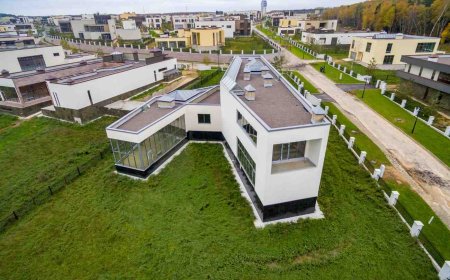Reinventing Education: How Technology Is Transforming the Classroom Experience
This transformation isn’t just about gadgets. It’s about rethinking how learning happens. From virtual reality and artificial intelligence to collaborative platforms and online assessments, technology is helping schools become more personalized, efficient, and accessible.

Education is changing. The days of relying solely on chalkboards, paper textbooks, and in-person lectures are fading. In their place, new tools powered by digital technology are reshaping the classroom experiencefor both teachers and students.
This transformation isnt just about gadgets. Its about rethinking how learning happens. From virtual reality and artificial intelligence to collaborative platforms and online assessments, technology is helping schools become more personalized, efficient, and accessible.
This post takes a closer look at how technology is influencing education and what that means for the future of teaching and learning.
1. Digital Tools Are Expanding Learning Beyond the Classroom
One of the biggest shifts in education is the move from traditional, in-person learning to more flexible digital formats. Online platforms, learning management systems, and digital content have opened new doors for both students and teachers.
How Its Happening
-
Learning Management Systems (LMS): Platforms like Google Classroom, Canvas, and Moodle let teachers distribute assignments, track progress, and communicate with studentsall in one place.
-
Virtual Classrooms: Video conferencing tools like Zoom and Microsoft Teams became common during the pandemic, but many schools still use them to support remote learning or hybrid models.
-
Digital Content Libraries: Websites like Khan Academy, Coursera, and Edmodo provide access to a wide range of subjects. Students can review materials at their own pace, while teachers can supplement lessons with interactive videos and quizzes.
-
24/7 Access: Online platforms give students the ability to learn from anywhere and at any time, reducing barriers related to location or schedule.
Real-World Impact
-
Rural schools can now offer advanced courses online that they couldnt staff locally.
-
Students who miss class due to illness or travel can catch up using recordings and digital assignments.
-
Teachers can manage workloads more efficiently by automating grading and feedback.
2. Personalization Through Artificial Intelligence and Data
Technology is making it easier to tailor education to the needs of individual students. Artificial intelligence and data analytics are playing a key role in identifying strengths, weaknesses, and learning styles.
Whats Being Used
-
Adaptive Learning Systems: Tools like DreamBox (math) or Duolingo (languages) adjust difficulty based on user performance. If a student struggles with a topic, the system offers more support.
-
Predictive Analytics: By tracking performance data, schools can identify students at risk of falling behind and intervene early.
-
AI Tutors and Chatbots: These can provide real-time support for students outside class hours. They're especially useful in large classrooms or online-only settings.
Benefits for Educators and Students
-
More time for one-on-one support, as software handles repetitive tasks like grading quizzes or checking homework.
-
Customized lesson plans that match a students pace and preferred learning method.
-
Early alerts for students who might need extra help or new challenges.
This approach helps move away from one-size-fits-all teaching toward more responsive, student-centered learning.
3. Collaboration and Communication Are Evolving
Classrooms today are more connected than ever. Technology is making it easier for students to collaborate with peers, share ideas, and work on group projectseven from different locations.
Examples of Tech-Driven Collaboration
-
Shared Documents and Projects: Google Docs, Microsoft OneNote, and online whiteboards let students work together in real time from separate devices.
-
Discussion Boards and Forums: Platforms like Edmodo or school LMS forums allow students to discuss assignments or help each other outside of class.
-
Multimedia Presentations: Students can use video, audio, and slides to present their work creatively and share it with classmates online.
What This Means in Practice
-
Team projects can involve students across grade levels or even different schools.
-
Teachers can monitor group progress in real time and provide guidance more effectively.
-
Quiet or introverted students often find online platforms more comfortable for expressing their thoughts.
This digital collaboration prepares students for workplaces that increasingly rely on remote teams and tech-driven communication.
4. Assessment and Feedback Are Becoming More Dynamic
Technology is changing not just how we teach, but how we measure learning. New tools allow for quicker, more varied, and more detailed feedback than traditional testing methods.
Key Changes in Assessment
-
Formative Assessments: Tools like Kahoot, Quizizz, and Socrative let teachers run real-time quizzes to check understanding during lessons.
-
Digital Portfolios: Instead of relying solely on test scores, students can showcase progress over time through projects, essays, and videos.
-
Instant Feedback: Automated grading systems provide immediate results, allowing students to see what they got wrong and why.
-
Data Dashboards: Teachers and administrators can analyze student performance at the class, school, or district level.
Results in the Classroom
-
Students understand their mistakes more quickly and adjust their learning strategies.
-
Teachers can adapt lessons based on what students know, rather than sticking to a rigid curriculum.
-
Grading becomes more objective and consistent, reducing bias and human error.
While standardized testing still plays a role, theres a growing emphasis on continuous learning and ongoing feedback.
A Note on Digital Access and Responsibility
While many schools are adopting technology quickly, its important to recognize that not all students have equal access. Internet connectivity, device availability, and tech literacy remain challenges, especially in underfunded districts.
Educators and policymakers are working to close this gap, but its a key issue that will affect how far tech can go in education.
Its also important to mention digital responsibility. As students spend more time onlinewhether learning or using devices for recreationtheyre also exposed to ads, consumer trends, and online marketplaces. This includes industries like the cheapest online vape store and digital promotions from platforms like vapestore sites. Schools and parents need to emphasize digital literacy and safe browsing habits as part of tech integration.
Final Thoughts: Whats Next for Tech in Education?
Technology isnt a fix-all, but it is a tool with real potential. It can make learning more flexible, personalized, and engaging. For teachers, it offers better ways to reach students and manage their classrooms. For students, it opens up opportunities to learn at their own pace, collaborate with others, and explore content in new ways.
Here are a few trends to keep an eye on:
-
Virtual Reality (VR) and Augmented Reality (AR): Immersive lessons in history, science, and geography.
-
Blockchain for Education: Secure, verifiable records of achievement and certification.
-
Gamification: Using game design elements to increase motivation and participation.
For educators, staying up to date with these tools means ongoing professional development and a willingness to experiment. For parents and students, it means learning how to use tech responsibly and effectively.
The classroom may look different today than it did ten years agobut the goal remains the same: helping students learn and grow. With the right tools and thoughtful implementation, technology can support that mission in meaningful ways.



































